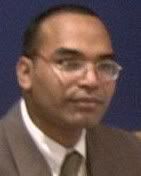My Teaching Philosophy
In teaching, I have found that it is very important to create a secure challenging environment for my students to learn from their mistakes, to be able to lose gracefully and use their mistakes as motivation to learn. Let’s forget all about grades. Let’s forget all about scores and tests. Let’s just enjoy learning. There is always life after the test. At the same time the teacher has to make sure that his tests are current, valid, reliable and transparent. I always provide regular feedback about the progress my students are making and about the areas, which they should particularly concentrate on. I usually keep parents informed.
I believe that using appropriate humor in teaching and in tests relieves anxiety and motivates learners. I have praised the students in front of the class, disciplined them in private. I often avoid face- threatening acts such as humiliating criticism, comparing students’ abilities, or putting the students in the spot of light unexpectedly. Accepting and caring about my students have always been shown in knowing and using their names and viewing them as individuals, I pay attention and listen to each one of them.
I have seen teachers trying to teach without inspiring their students with a desire to learn. I have seen teachers trying to teach without securing their students’ attention. I have seen teachers trying to bribe or threaten their students to learn. In vain, they have tried the carrot and the stick. Those teachers failed only to try again the next lesson. You can lead a horse to water but you can not make him drink. Students will learn only if they are interested.
The key to my success in teaching is to find out about my students’ needs, goals, interests and experiences and try to make the subject matter as relevant as possible to their lives. Students will succeed if we expect them to succeed. It has always been my responsibility to provide my students with different ways to succeed in the language class starting with easier tasks and proceeding to more difficult ones. I usually adjust the difficulty level of tasks to the students’ abilities and mix demanding tasks with more manageable ones.
In order to complete the tasks, I believe students should know exactly what success in every task involves. Written procedures usually help students remember the steps to perform tasks. Making task content attractive by adapting it to the students’ natural interests or by including novel, intriguing, exotic, or fantasy elements has always been my primary concern.
I think that students should be introduced to new learning strategies to facilitate the intake of new materials. Learners should be given real choices about as many aspects of the learning process as possible, such as the topics of their own presentations. At the beginning of every lesson, I try to capture the interest of my own students with an interesting introduction.
I teach by asking lots of questions and by encouraging students to ask questions. I constantly move around the room as I teach; walk energetically and purposefully among learners. I have found that using demonstrative movements of my head, arms and maintaining eye contact and occasionally nodding my head show understanding while interacting with students. I try to put some excitement into my speech by varying my pitch, volume and rate. The teacher should be enthusiastic about himself, his students, and his profession.
In my teaching, I nurture in my students intrinsic motivation to learn English. My students learn because they want to learn, they feel like learning, they love to learn. The same way all the creative artists, scientists, and writers learn.


<< Home